This lesson focuses on completing the Lean Canvas. We'll cover the meaning of each section and some examples of what each section might contain.
Order of Lean Canvas completion
As you examine the diagram below, the boxes which contain the number "1" should be filled in first, the box with number "2" should be filled in next, and so on.
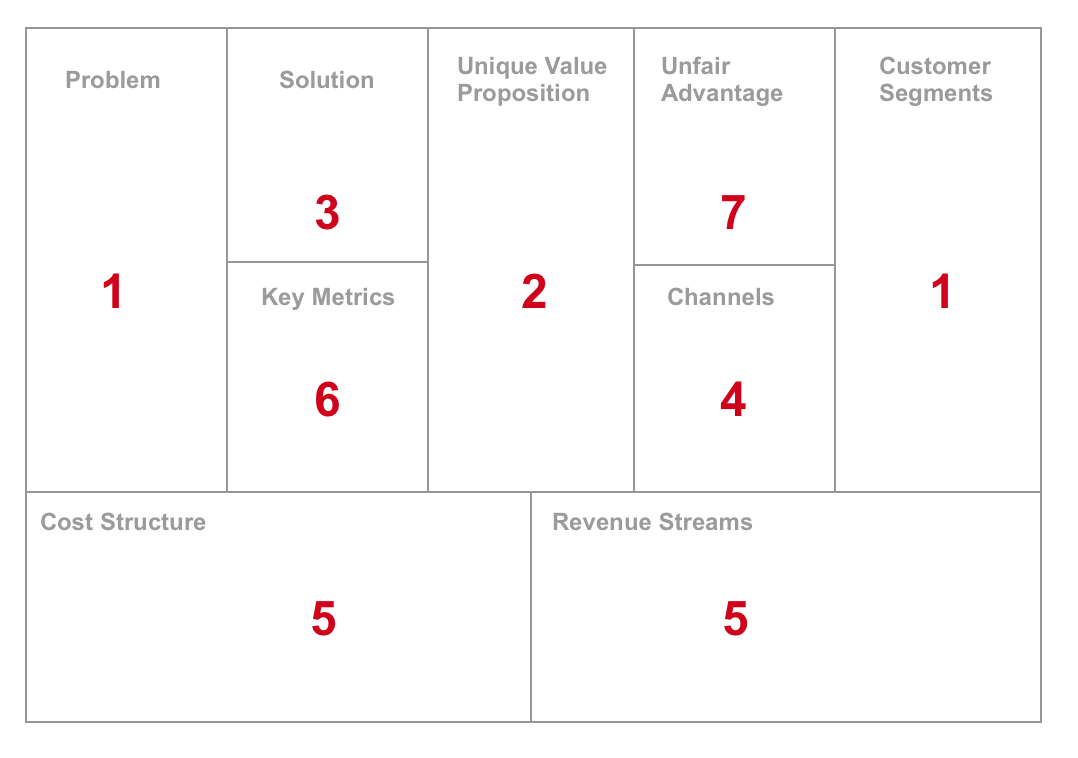
Fill in the canvas in the following order:
Problem & Customer Segments
Unique Value Proposition
Solution
Channels
Revenue Stream & Cost Structure
Key Metrics
Unfair Advantage
Completing each section of the lean canvas
Now let's examine what type of detail is appropriate for completing each section.
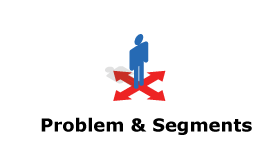
The Problem & Segments section
For your target customer's segments, sketch the top three problems that they face (or their top three jobs-to-be-done). If you have previously completed a job-to-be-done persona template, then some of that information can be re-used here in the "Problem" and "Customer Segments" boxes.
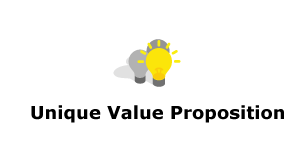
The Unique Value Proposition section
Steve Blank describes the unique value proposition as:
A single, clear compelling message that states why you are different and worth buying.
For example, let's take a product we know: OpenClassrooms! A clear compelling message could be something like "Your dream degree and dream job. Guaranteed."
The unique value proposition for OpenClassrooms could be something like "To be the only provider of online degree-level paths with a job guarantee, taught by leading experts."
Aim for less than 10-12 words in the unique value proposition.
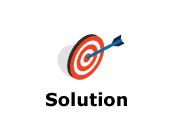
The Solution section
The top three features or possible outcomes achievable with your product/service should be listed in this section. For each of the three problems you listed above, list a feature/outcome that your product or service will provide.
The solution for OpenClassrooms could be something short like:
Job guarantee
Mentors matched to each student
Degree-level course material taught by experts

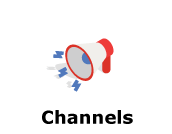
The Channels section
How will customers discover your product/service? Options include blogging, trade shows, outbound direct sales, paid digital acquisition, white papers, content creation, radio ads, search engine optimization (SEO), organizing Meetups or giving talks.
Some channels have different costs than others. The cost of writing a blog post or organizing a Meetup is just your time. If you want to buy traffic from Google Adwords at $5 per click, then that's fine, but can you be profitable?
When completing a Lean Canvas, the idea is to think of the one or two most suitable channels for acquiring customers. Right now, you are just writing down what your intuition tells you. At another point in the future, you will validate that these channels can be effective for you.
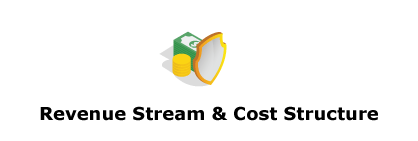
The Revenue Stream & Cost Structure section
Your costs may include elements like:
Staff costs/wages
Office rental
Servers/hosting charges
Customer acquisition costs
Decide how much you will charge for your product. This is not a final decision - the price could change as you learn more and develop the product. Write down a fair price that you think customers are willing to pay (from your previous interviews).
Imagine that your costs above are $20,000 per month, and your product sells for $10 per month. Then the breakeven point, defined as the moment where your revenues are equal to your costs, is when you reach 2,000 customers.
Another way to look at this is that 2,000 customers * $10 each = $20,000 per month, which means the revenue for 2,000 customers is equal to your costs. You are neither making money nor losing money. You should also write in this box the number of customers required to break even, e.g., "break-even point = 2,000 customers."

The Key Metrics section
Think about the key activities that you want to see your users engaging in. For example, the key activities in a product like Kickstarter are:
Artists listing their projects
Fans making pledges
Projects getting funded
Although there are many activities in any product, your objective is to pick the three most important. Your key metrics will measure the rate at which these activities happen.
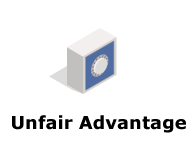
The Unfair Advantage section
This is the hardest part of the canvas to complete. Jason Cohen, author of the blog A Smart Bear , describes an unfair advantage as:
A real unfair advantage is something that cannot be easily copied or bought.
Examples of what may represent an unfair advantage:
A large community of users
An instantly-recognized brand
Proprietary technology including algorithms
Strategic contracts or partnerships with major companies
When you look at the list above, you will see that it would not be easy to copy or buy any of these elements. If you have a real "unfair advantage," then it means that your business and business model are stronger because you can withstand competition and even a copy-cat competitor.
Tips
Try to complete the canvas in one sitting.
Ideally complete it in 20 minutes.
If you have multiple customer segments, complete a Lean Canvas for each segment.
Business plans evolve over time, and you will probably update the canvas in several weeks or months as you learn more. The goal is to complete the canvas with the best information you have today rather than worry about accuracy.
It is perfectly normal to struggle to fill in some parts of the canvas. This means that you don't have a firm idea of a part of your business model. Fill in something.
In the next chapter, we'll see how the parts of the canvas that you feel are the "weakest" are really good signposts to what learning you need to do next!
Let's recap:
The sections of the Lean Canvas are best completed in the following order:
Unique Value Proposition
Solution
Channels
Key Metrics
Unfair Advantage
